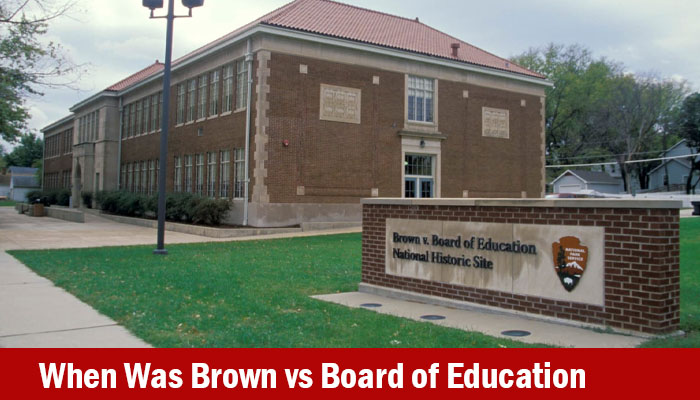When Was Brown vs Board of Education of Topeka a Supreme Court Decision?
When was Brown vs. Board of Education of Topeka? In 1954, the Supreme Court in an unprecedented ruling ruled that racial segregation in public schools was unconstitutional. While segregated schools are often considered inferior, they can be equally good schools that provide students of all races with a high-quality education. As a result, racial segregation is no longer permitted in public school systems.
In addition to the legal arguments made by the LDF lawyers, the LDF also had the help of a team of legal scholars. The LDF drew upon research by social scientists and historians, including Kenneth Clark’s famous doll experiments. The research showed that black children performed worse in these experiments than their white peers. As a result, the Supreme Court’s decision was significant. However, the ruling was not the end of segregation in public education.
The case began in the 1950s and involved five lawsuits that ultimately resulted in a landmark ruling for the civil rights movement. The NAACP filed Brown v. Board of Education in 1952. The court ruled in favor of the LDF, and the Supreme Court later decided to dismiss all five of these cases. This means that it was only a matter of time until the U.S. Supreme Court ruled in favor of Brown.
The LDF lawyers had a team of legal scholars who backed them in the lawsuit. William Coleman, the first black law clerk on the Supreme Court, served as one of their legal advisors. The LDF used research by historians, as well as a number of social science arguments. For instance, Kenneth Clark’s famous doll experiments demonstrated that black children did not perform better than their white peers.
Despite its impact on education, Brown was a significant landmark in the history of the civil rights movement. Although Brown was an important landmark in the history of the United States, it was also a defining moment in history. Today, people are still debating whether the case was a success or a failure. But what was Brown really about, and what is its significance? While the Supreme Court ruled on the merits of segregation, the case has become a standard that shaped American life.
While Brown vs. Board of Education may be the most famous civil rights case in history, the LDF argued that it was crucial to ensure that black children have equal access to education. In fact, it was a defining moment in the history of American history. When was Brown vs. Board of Education? And what does it mean? How did it affect the history of our country? In the 1960s, the ruling was unanimously upheld.
The case challenged the system of racial segregation in all schools. The UNESCO statement on The Race Question in 1950 was influential in the development of the Brown case. This statement condemned attempts to justify racism by state officials and legislators. The UNESCO declaration was cited by many of the plaintiffs in the Brown vs. Board of Education. In the same way, the legal rights of black students were upheld. When Was Brown vs Board of Education of Topeka a Supreme Court Decision?
The landmark case in 1954 changed the history of the United States. The Supreme Court ruled that segregated schools were unconstitutional. As a result, the Supreme Court declared segregation unconstitutional. The LDF was a pioneering force in the civil rights movement. In addition to being the most prominent civil rights case of all time, it also fought for the equal treatment of all races.
The case was not only historic but also important in terms of social justice. It made education more accessible for people from different backgrounds. The Supreme Court’s decision is the most important decision in U.S. history. But it was a controversial case. In the United States, it has influenced the way we live our lives. While it was unconstitutional in 1954, it was also a critical case in the current educational landscape.

